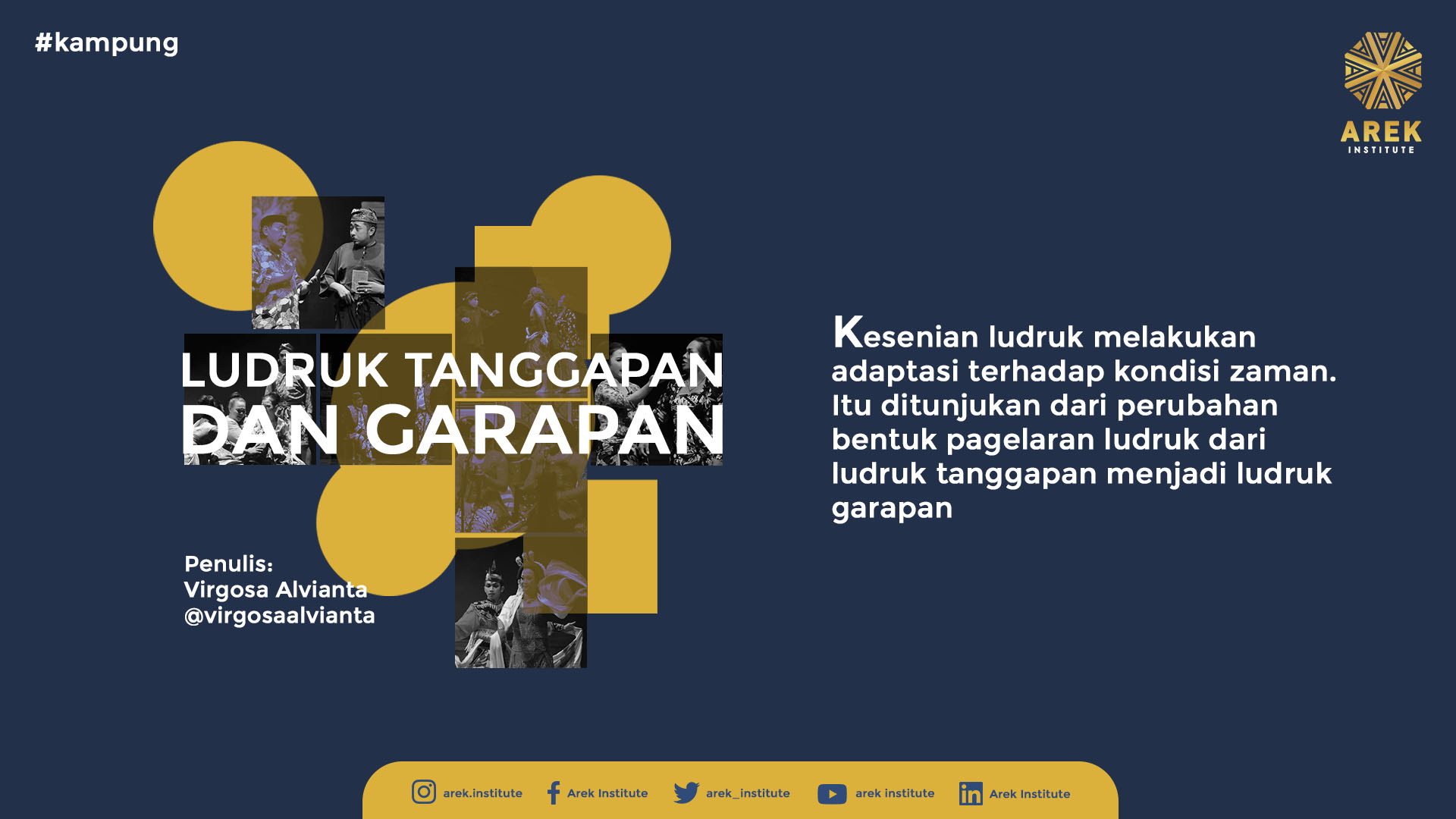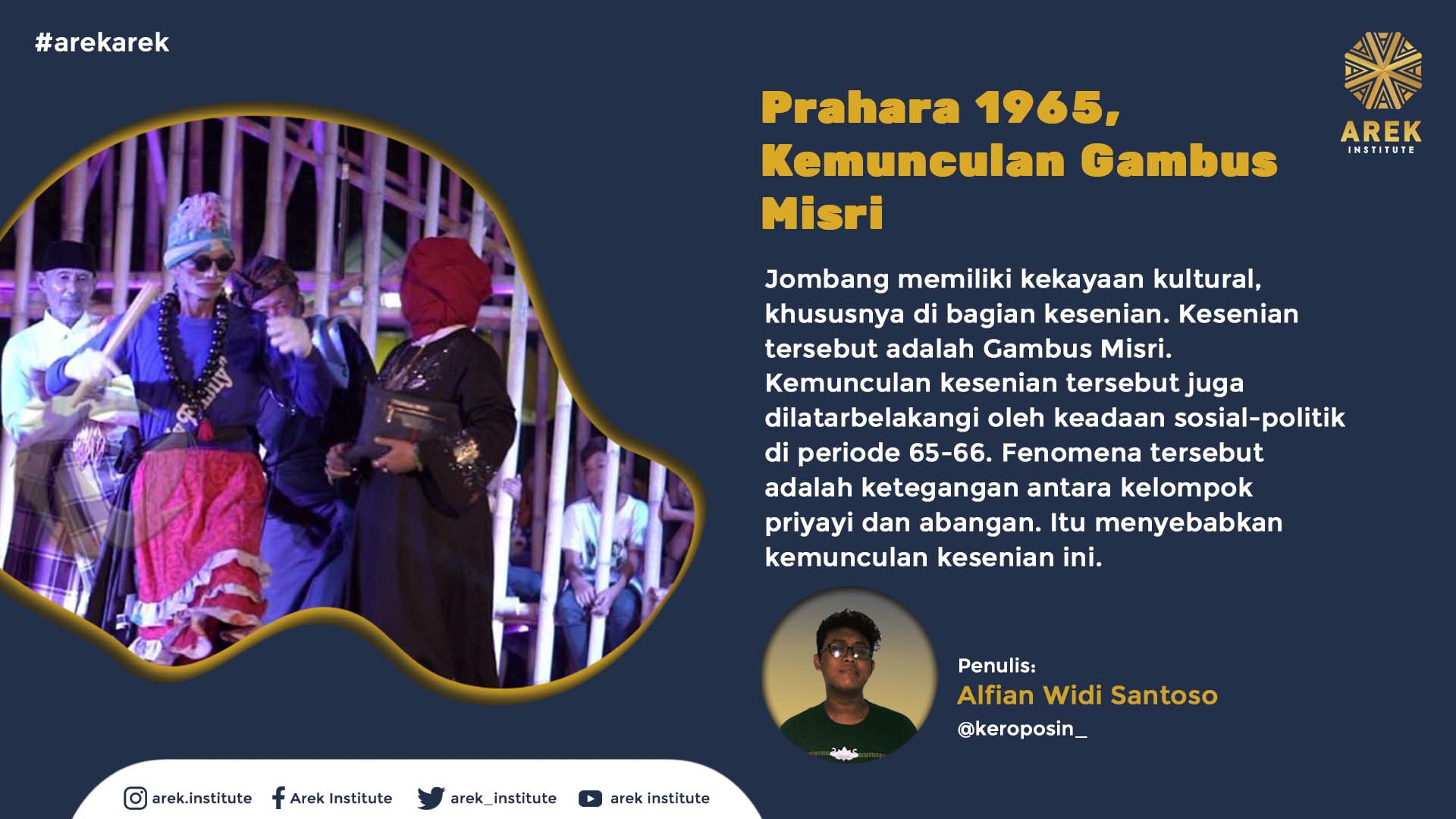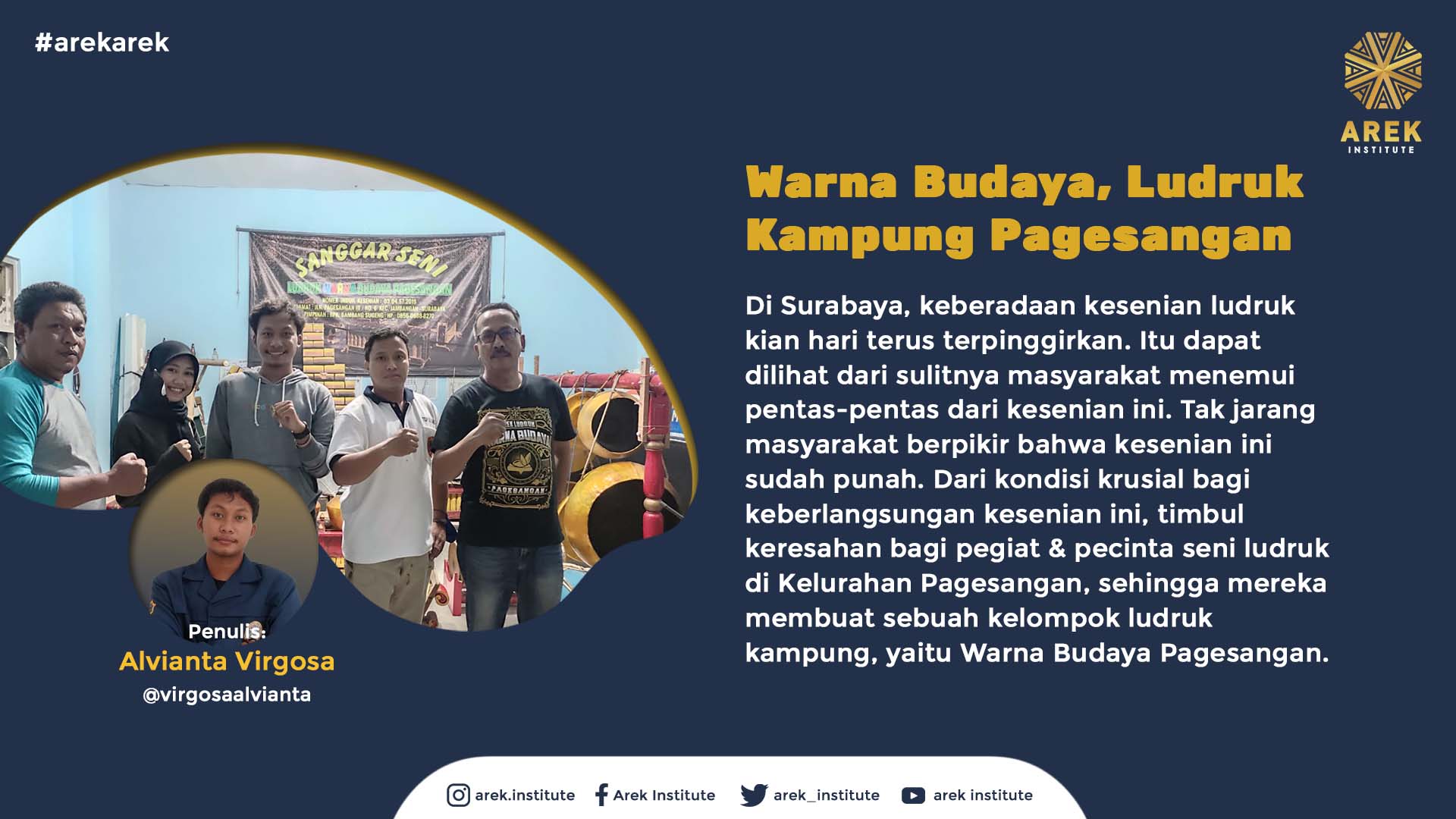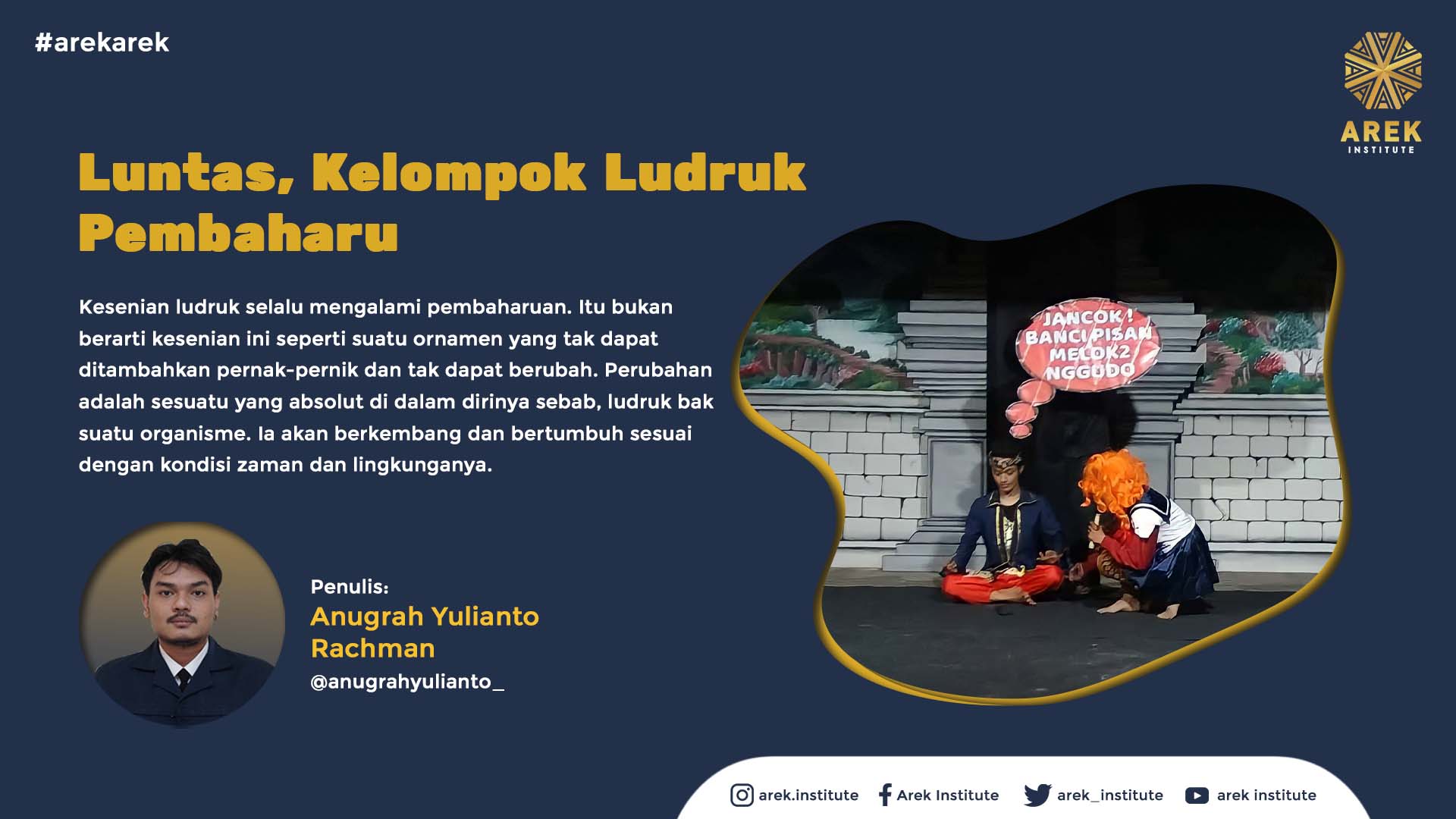
Responsive and Crafting Ludruk Categorisation

The evolution of the times forces the art of Ludruk to adapt to all changes. This adjustment, with the times, is an adaptation in the form of performances. This can be seen through the change from Ludruk Tanggapan (responsive Ludruk performances) to Ludruk Garapan (crafted Ludruk performances). Both have differences because this art form adjusts to the conditions of the times and their environment.
Ludruk Tanggapan is a form of Ludruk performance held in response to specific events, such as weddings, slametan (Javanese ceremonial feasts), or harvest seasons. When these events occur, the performances of this group are always enlivened by the presence of night markets, and the duration of the performance is very long. This performance can start from 9 p.m. until the early morning.
On the other hand, Ludruk Garapan is a performance that usually appears in government agendas, festivals, or competitions. This performance is arranged to suit the market and to shorten the time. In an interview, Arimbi–a Ludruk artist–explained that the structure of Ludruk Tanggapan performances has a longer duration than Ludruk Garapan. The structure of the Ludruk Tanggapan performance is as follows: (I) Opening with Remo dance attractions, (II) Snake dance (III) comedy sketches, (IV) Presentation of the main story or drama, which is the core of the performance.
Unlike the structure of Ludruk Tanggapan, Ludruk Garapan has a shorter duration. This is shown by cutting some parts of the Ludruk Tanggapan structure, including: removing the snake dance performance and reducing the duration of the performance. As a result of this time reduction, this type of Ludruk has a duration of only two to three hours.
The classification of Ludruk Tanggapan and Ludruk Garapan is not new. This phenomenon has been ongoing since the New Order government in the 1990s. At that time, the government had many agendas involving the Ludruk art community. These agendas included festivals, competitions, and government performances.
The numerous events were more directed towards Ludruk Garapan performances. This was marked by a shorter performance duration than Ludruk Tanggapan. This time reduction was adjusted to the sequence of events arranged by the New Order Government.
On the other hand, Ludruk Tanggapan performances were rarely found. Because every Ludruk performance in that period was always under military supervision. This resulted in their inability to perform as freely as before. Ludruk at that time was only emphasized to show the main event, namely the comedy sketches and the presentation of the drama.
After the New Order fell, from the 2000s to 2010, the art of Ludruk once became a favorite entertainment for the public. Ludruk Tanggapan performances became a frequent sight due to the many celebrations inviting Ludruk art. Here, the art activists began to return to the traditional elements of Ludruk art like in the old days. These elements included the Remo dance given a long time, snake dance, comedy sketches, and the presentation of the drama.
The resurgence of this art began to be felt during this period. This is shown through the high enthusiasm of the public to host Ludruk in an event. Although not as massive as in the previous period, this art began to be favored by many modern youths and the elderly because it became a catharsis for the romance of past entertainment.
However, from 2012 to the present, the art of Ludruk has experienced ups and downs in its performances. Ludruk Tanggapan began to lose its appeal to the public. This was caused by the transition in the evolution of the times. The development of various forms of entertainment and spectacles such as television, radio, the internet, and others made Ludruk lose its function as a modern ritual (Azali 2012).
In his writing, Azali shows that the enthusiasts for the art of Ludruk began to decrease due to the development of various forms of entertainment and spectacles. People prefer forms of entertainment that do not require energy to leave the house such as watching television, listening to the radio, and playing on social media. From this change in public habits, Ludruk artists are forced to brainstorm to innovate their performances again, especially artists in urban communities.
Upon closer examination, the phenomenon of Ludruk Garapan is a phenomenon of Ludruk groups in urban areas. Because, Ludruk Garapan groups appeared due to government programs such as festivals or cultural events. The limited performance time at these events causes changes in the structure and duration of performances from Ludruk Garapan groups.
Garapan is one of the forms of Ludruk groups that has most developed in urban areas, especially in Surabaya.
Overall, the phenomenon of Ludruk Tanggapan is a form of adaptation by Ludruk artists to their conditions and environment. This leads to adjustments in the performance style of Ludruk, such as cutting down on the duration and adjusting the structure of the performance.





